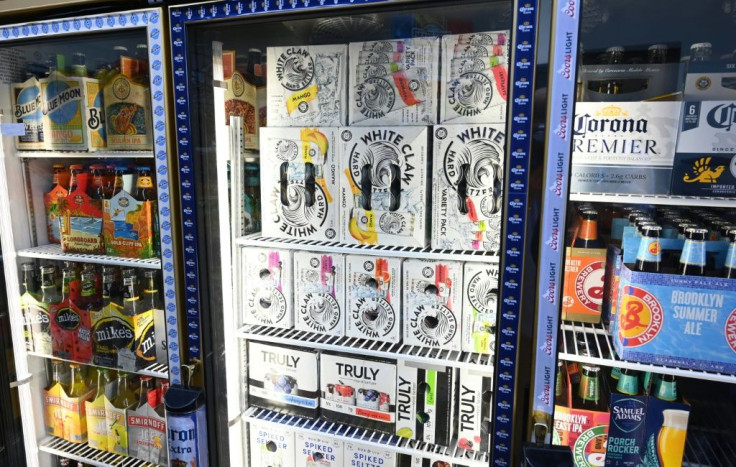Will Hard Seltzer Stick Around? Anheuser Busch InBev CEO Says Lower-Calorie Beer Alternative is 'Here To Stay'

KEY POINTS
- Hard seltzers made up 2.6% of the U.S. alcoholic bevarage market in 2019, up from 0.85% in 2018
- The popularity of hard seltzers grew took off during the summer as drinkers looked to a "lighter" alternative to beer
- InBev and several other beverage companies are currently working to expand their portfolio of drinks to capitalize on the popularity of hard seltzers
Anheuser Busch InBev’s CEO said in an interview Tuesday morning that the company is betting big on hard seltzers, as beer consumption continues to struggle in the U.S.
CEO Carlos Brito spoke about the boom in popularity of hard seltzers during an appearance on CNBC’s “The Squawk Box.”
"It is something that’s profitable; it’s here to stay," Brito said. "We’re beginning to explore in some other countries because, I mean, the same trends that you see, consumer wise, in the U.S. are the same trends you see elsewhere in the world."
InBev, the parent company of beer giant Budweiser, is the owner of Bon & Viv hard seltzers. The brand is easily recognized thanks to the twin mermaids painted on the cans and cases. It is also one of the three biggest hard seltzer brands in the U.S., alongside Mark Anthony Brands’ White Claw and Boston Beer’s Truly.
The popularity of hard seltzers exploded in the summer of 2019 as a “health conscious” alcoholic drink for anyone looking for an alternative to beer. This is due to seltzers having a lower calorie count and being a generally “lighter” drink while having the same alcohol by volume as beer.
Sales of the White Claw grew 283% to $327.7 million in July, compared to the same period in 2018.
Alcohol data and intelligence firm, IWSR, said hard seltzer’s made up 2.6% of the U.S. market in 2019, up from 0.85% in 2018.
Beer consumption, on the other hand, has continued to drop as people look for alternatives or simply give up drinking. IWSR said beer drinking had declined by 2.3% in 2019, almost matching the growth of hard seltzer consumption.
InBev and several other beverage companies have plans for new brands of hard seltzers.
InBev has begun offering hard seltzers from its Natural beer brand with Natural Light Seltzers and will debut a new Bud Light Seltzer in a new ad during the Super Bowl. Molson Coors Beverage also dropped brewing company from the title as it looks to expand its offerings into more non-beer offerings.
© Copyright IBTimes 2025. All rights reserved.





















